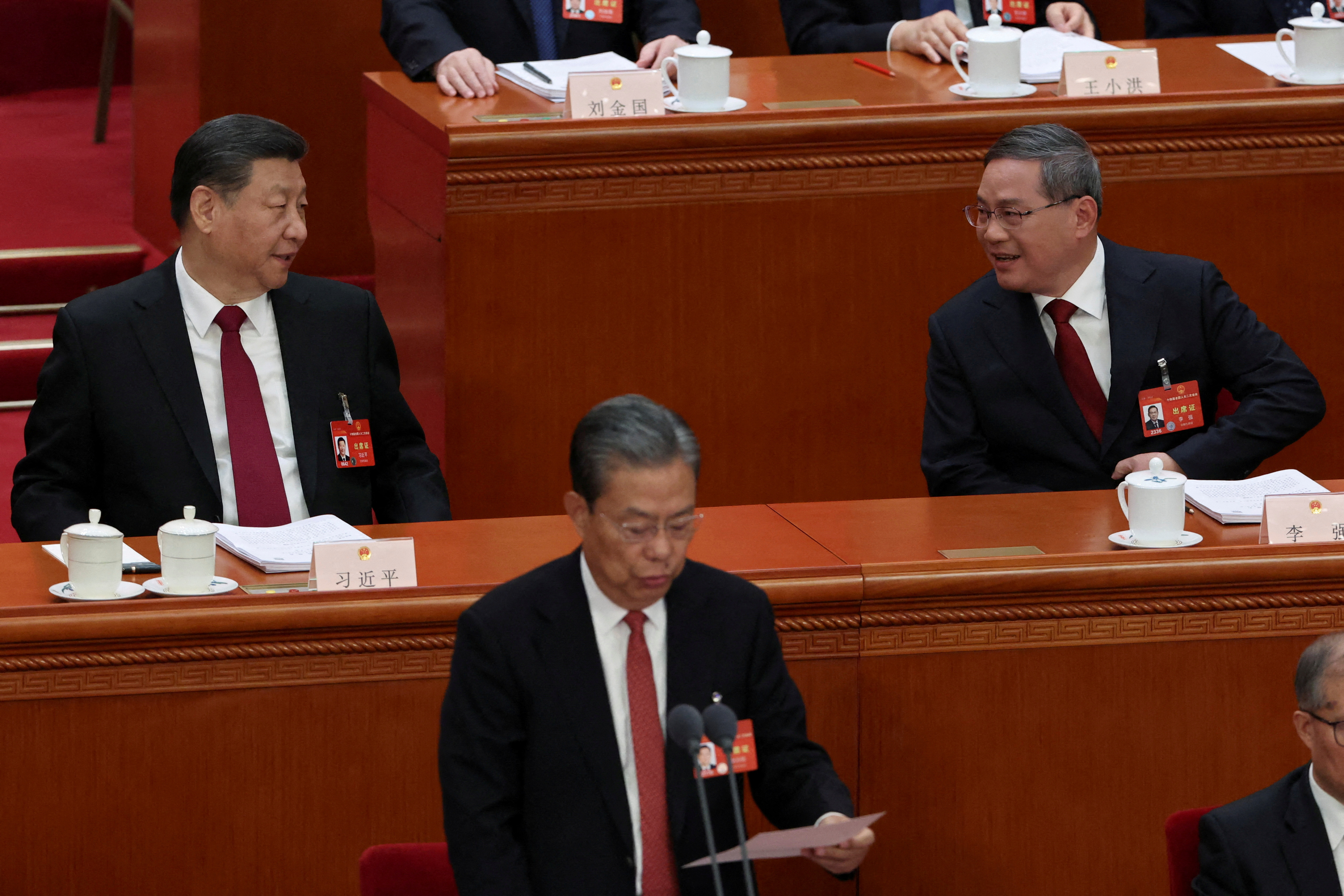Analysis-As China’s Xi summons ‘new productive forces’, old questions linger for economy

By James Pomfret, Kevin Yao and Ellen Zhang
HONG KONG/BEIJING (Reuters) – Facing its deepest economic challenges in years, China’s leadership has tasked ministries and local governments with implementing a new mantra from President Xi Jinping: unleash “new productive forces”.
In his annual report to China’s legislature on Tuesday, Premier Li Qiang, Xi’s top deputy, vowed a “new leap forward” by supporting developing sectors and industries including electric vehicles, new materials, commercial spaceflight, quantum technology and life sciences.
The term “new productive forces” was coined by Xi last September during a trip to a rustbelt city in northeast China, where he highlighted the need for a new model for economic development based on innovation in advanced sectors.
State media seized on it and trumpeted the rubric to the
point where it has been enshrined into Xi Jinping Thought, a
core element of doctrine for the ruling Communist Party.
By focusing on the prospect for future growth, the slogan shifts the focus from China’s present difficulties, including weak consumer confidence, the overhang of a property crisis and local government indebtedness.
But how China will implement the vision – the challenge taken up on Tuesday by China’s parliament, a body controlled by the Party – remains unclear and its success uncertain.
“The direction of promoting tech innovation is right, but my worry is how to achieve it – what path and what institutional mechanisms should we rely on to drive technological innovation and boost productivity?” said one Chinese policy adviser who spoke to Reuters on condition of anonymity.
“The reality is that market forces are retreating, and the government is dominating the drive.”
Beijing hopes the “new productive forces” campaign will strengthen China at a time when geopolitical pressures including steps by the United States to “decouple” or “de-risk” have curtailed access to foreign technology.
“Prioritising the ‘new productive forces’ in the agenda reflects leaders’ anxiety over China potentially lagging behind the U.S. in cutting-edge technologies such as advanced chips and artificial intelligence,” said Tianchen Xu, an economist at the Economist Intelligence Unit in Beijing.
Li promised more investment in science and technology, steps he said would drive eventual gains in fields such as artificial intelligence and the applications of big data.
Expanding domestic demand, a step many economists consider the most pressing priority for China, featured lower in Li’s summary of priorities.
‘DOUBLING DOWN’
As of this week, every provincial government is on China notice to drive Xi’s agenda, but there are still unanswered questions of how to promote top-down innovation.
“They’re just doubling down on Xi Jinping thinking on the economy … the whole report is very top-down,” said Steve Tsang, director of the SOAS China Institute in London.
One risk is that the push could usher in a big increase in state subsidies for research and development in areas that never pay off, a misallocation of funding.
Li, in his work report, said Beijing would issue one trillion yuan’s worth of special purpose bonds – equivalent to $139 billion – in 2024 to provide funding for strategic sectors.
China’s focus on national security and tight government control could also hamper innovation, foreign investment and the luring and retention of top talent, analysts said.
“To support innovation, we should give people more freedom to think and talk, because many innovations result from the collision of ideas. This is a big contradiction,” the policy adviser said.
The new mantra was also taken up by China’s state planning agency, the National Development and Reform Commission. Its annual report on Tuesday pledged support for industries including satellite internet applications, China’s BeiDou Navigation Satellite System, and research into nuclear fusion.
China has long sought to upgrade its ageing industrial hinterlands, including the coastal Pearl River and Yangtze River deltas, with mixed results as wages and production costs rise, eroding China’s competitiveness vis-a-vis other countries.
How it manages this transition, previously dubbed “emptying the cage and changing the bird”, will be critical.
“The biggest challenge is that the market still needs to support it. At present, China has invested a lot in industrial upgrading, and the results are still relatively unremarkable,” said a second policy adviser who asked not to be named given the sensitivity of the matter.








